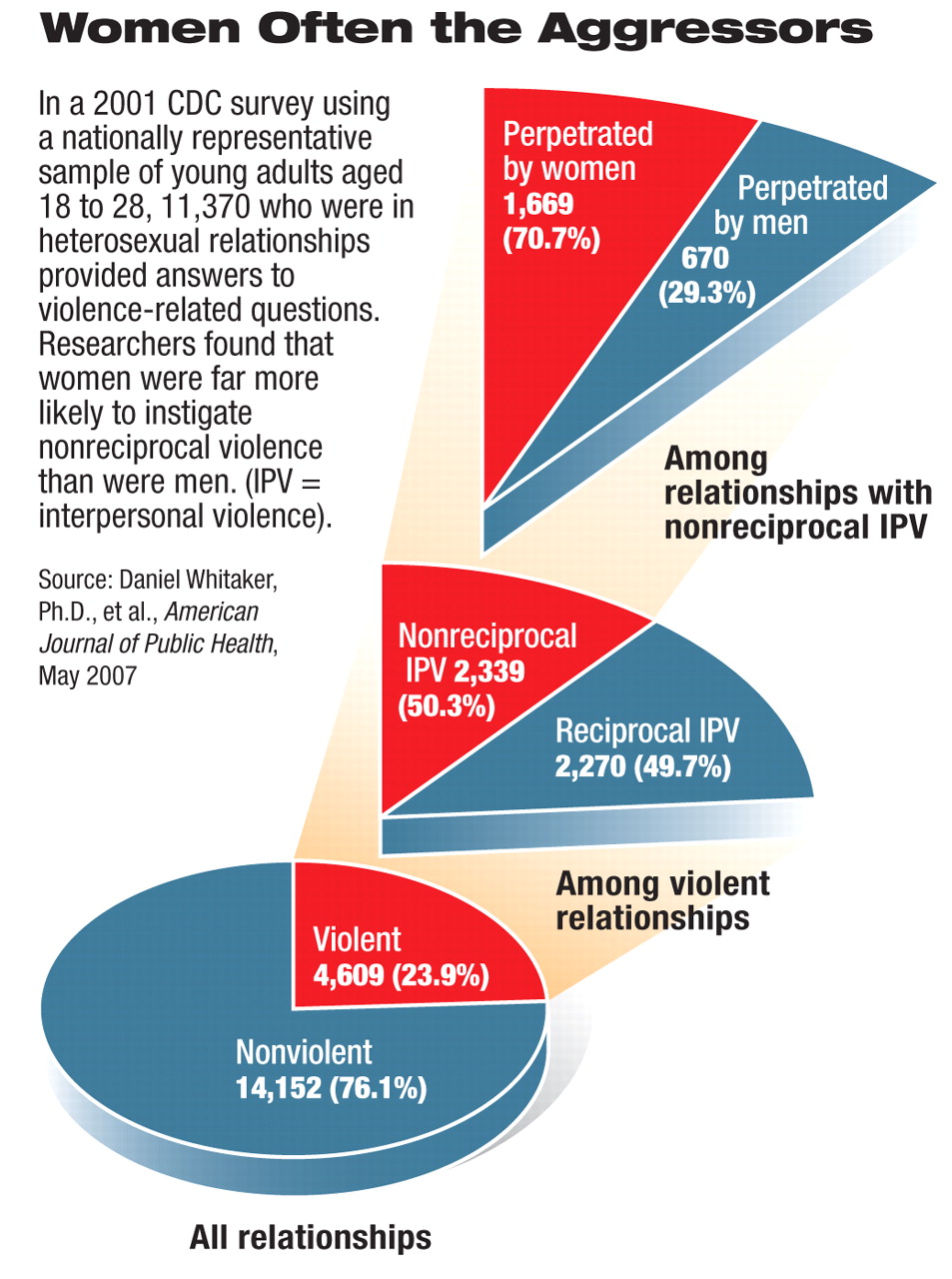Quote:
Originally Posted by Raven Reaper

How about Toxic Femininity? Would that be sexist too?

Hahaha. |
Always read a study yourself before believing the nice pie charts. That is an interesting finding, but one that offers no general insight into the argument you are trying to make. The authors of the study can outline this themselves:
Quote:
There are several limitations of this work.
The first set centers around the measures of
partner violence. All measures were assessed
using only participant reports about their own
perpetration of violence and that of their partners.
The data are thus subject to all the biases
and limitations inherent to this form of
data collection, such as recall bias, social desirability
bias, and reporting bias. Regarding
reporting biases, there has been much discussion
of whether there are differences in reported
IPV by the gender of the reporter. A
meta-analysis of the reliability of the conflict
tactics scale concluded that there is evidence
of underreporting by both genders, and that
underreporting may be greater for men,34 for
more severe acts of IPV.21 It would have been
ideal to collect violence data from both partners,
but those data were not collected from
the full Add Health sample.
A second measurement issue pertains to the
scope of violence measures. The 3 questionsincluded in the Add Health study do not capture
all forms of violence that occur between
relationship partners, including many of the
more severe forms of partner violence on the
Conflict Tactics Scale (e.g., used a knife or
gun, choked, or burned). Questions about
emotional, verbal, psychological, or sexual aggression
were also not included. Similarly,
only a single item assessed injury to victims
and it focused on injury frequency and excluded
injury severity and whether medical
attention was needed or sought. Thus, it is
unclear whether the data presented here
would be similar had the violence and injury
assessment been more thorough or if different
forms of violence had been measured and
analyzed separately. Perhaps more important
than the limited measures of violence and injury
is the fact that no data were collected
about the causes or function of violence. Such
data are needed to understand why relationships
with reciprocal violence are more violent
and more likely to result in injury. We
speculated that retaliation may lead to escalating
violence and injury, but data are
needed to examine this hypothesis. Future
studies should focus on the causes and context
of reciprocal and nonreciprocal IPV.
Another limitation is that the Add Health
study obtained partner violence data primarily
about relationships considered to be important
as defined by the Add research team.
Thus, it is not clear how this selection bias
may have impacted the findings—that is,
whether the findings would be the same with
a fuller sample of relationships. However, our
findings are consistent with previous research
on other samples that have shown reciprocal
partner violence is fairly common with adolescents11
and with broader populations.8,9
Finally, as noted, the data collected were part
of a nationally representative sample selected
when participants were in middle and high
school. The use of a nationally representative
sample greatly increases the generalizability
of the findings, but this particular sample is of
limited range in age (18–28 years) and likely
does not include the most severely abused
victims who are subjected to extreme control
by their partners and may be unable or unwilling
to participate in research.22
|
Apologies for the formatting, I have copied that from the study. It is a common tactic for smarmy internet sites to cherry-pick study findings from academia and employ colourful pie charts to try to make some sort of wider point. When you look at the methods of this study, all of those limitations are obvious, which is why the authors have stated them.